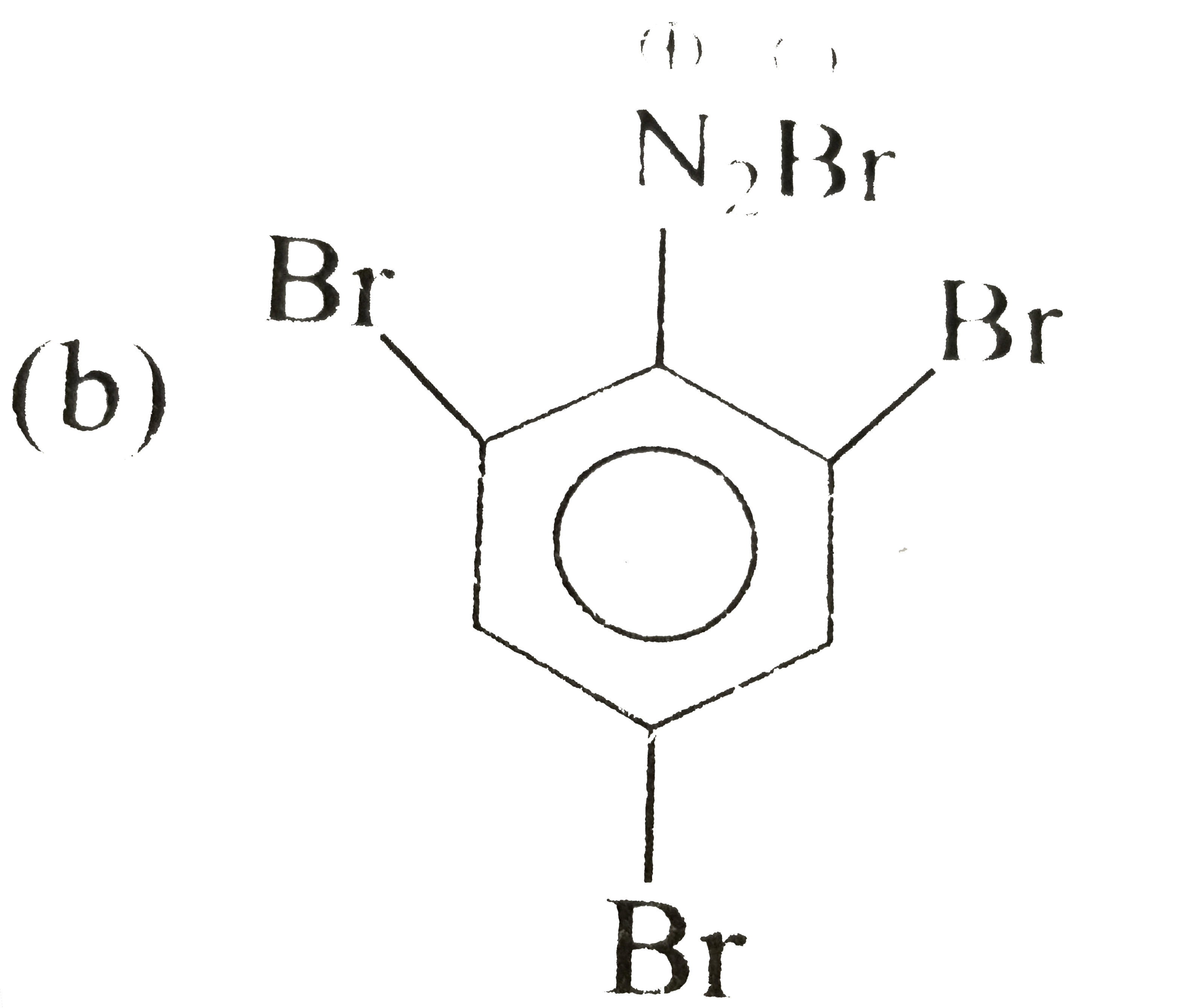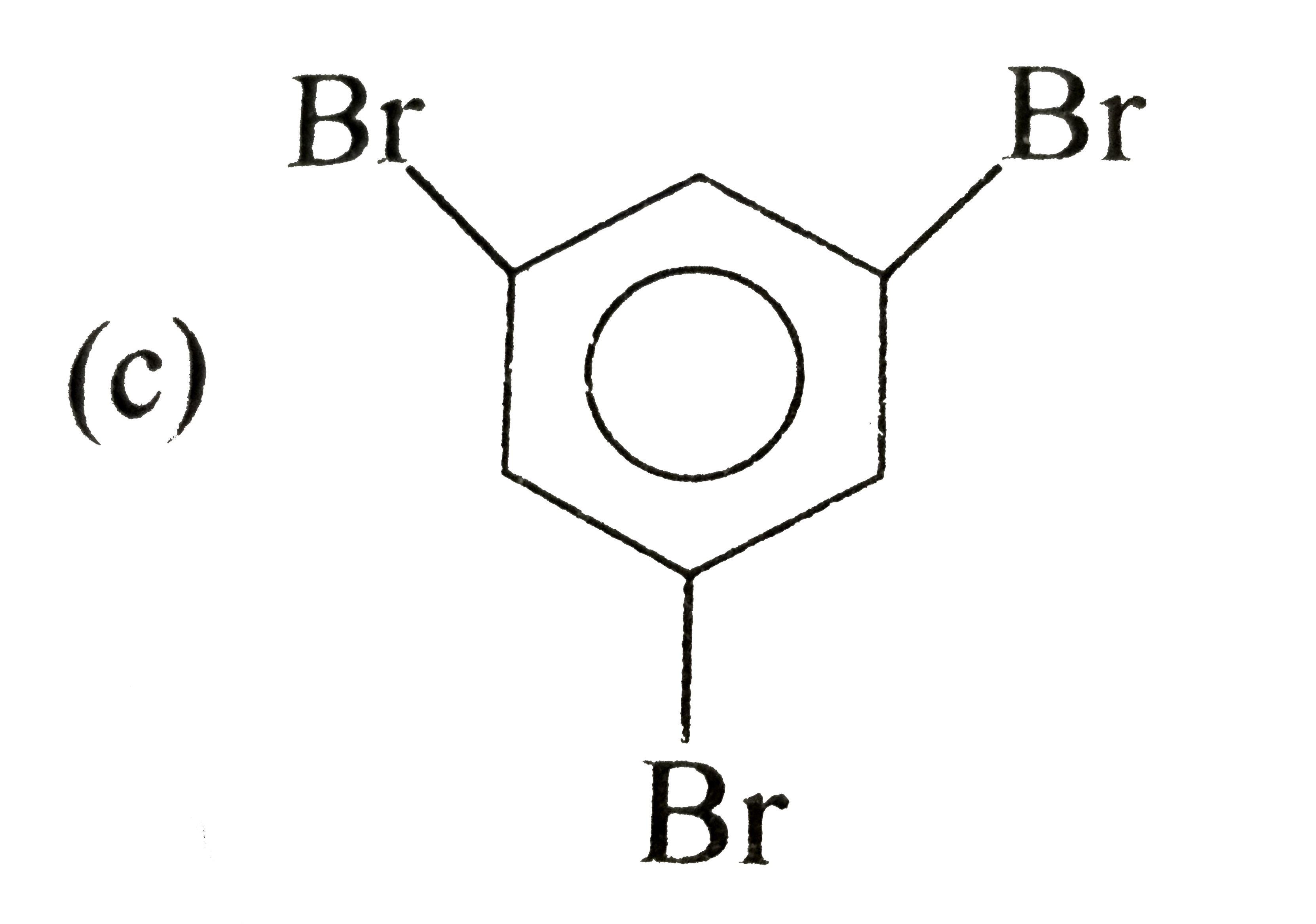Explore topic-wise InterviewSolutions in .
This section includes InterviewSolutions, each offering curated multiple-choice questions to sharpen your knowledge and support exam preparation. Choose a topic below to get started.
| 21301. |
Which of the following statements/relationships is not correct ? |
|
Answer» In an exothermic reaction, enthalpy of products is LESS than that of reactants. |
|
| 21302. |
Which one of the following molecule will have all equal X-F bonds length? (where X=Central atom) |
|
Answer» `SOCl_(2)F_(2)` |
|
| 21304. |
Which one of the following correctly represents esterification reaction |
|
Answer»
|
|
| 21305. |
Which reagent can convert accetic acid into ethanol? |
|
Answer» NA + ALCOHOL |
|
| 21306. |
When 5.35 gm Acl is dissolved in 250 ml of water the pH of solution is found to be 4.827. Find the ionic radius of A+ and Cl^(-). If "Acl" forms CsCl type crystal having 2.2 g//cm^(3). Given K_(b)(AOH) = 1.8 xx 10^(-5) r^(+)/r^(-) = 0.732 for this cell unit. |
|
Answer» SOLUTION :`"ACL"(s) to A^(+)(aq) + CL^(-)(aq)` `A^(+)(aq) + H_(2)O antilog `(-4.827) = sqrt((1 xx 10^(-4))/(1.8 xx 10^(-5)) xx (5.35 xx 1000)/(M xx 250))` M= 53.5 For CsC l type structure. `rho = (ZM)/(a^(3) xx 6.0923 xx 10^(23))/(2.2 xx 6.023 xx 10^(23))^(1//3) = 3.43 A` `r_(A)^(+) + r_(cl)^(-) = sqrt(3)/2 xx a = 0.866 a = 0.866 xx 3.43 A = 2.97` A `therefore R_(Å)/R_(Cl-) = 0.732` On solving `r_(A) = 1.255` A `r_(Cl-) = 1.715` Å |
|
| 21307. |
What is obtained when glucose is heated with HI for a long time? |
| Answer» SOLUTION :n-hexane | |
| 21308. |
What will be the normality of a solution containing 4.9 g H_(3) PO_(4) dissolved in 500 ml water ? |
|
Answer» `0.3` `N=(4.9xx1000)/(32.6xx500)=0.3 N`. |
|
| 21309. |
Which of the following oxides of chromium is amphoteric in nature? |
|
Answer» CRO |
|
| 21310. |
Which of the following compounds is sparingly soluble in ammonia |
|
Answer» AgI `2NO OVERSET(900^(@)C)to N_(2)+ O_(2)` `2N_(2)O overset(500-900^(@)C)to 2N_(2)+O_(2)` `N_(2)O_(3) overset("Room temperature")to NO +O_(2)` `2N_(2)O_(5) overset(40^(@)C)to4NO_(2)+O_(2)` |
|
| 21311. |
underset (Hr_(2))overset(Br_(2))to Xunderset(H_(3)PO_(2))overset(NaNO_(2)//Hcl(0-5^(@)C))to Y The end product Y is: |
|
Answer»
|
|
| 21312. |
Which of the following is correct order of boiling point of alcohol ? (i) Propan 1 - ol (ii) Butan -1 - ol (iii) Butan-2-ol (iv) 2-Methyl propan-2-ol |
|
Answer» ` (i) LT (III) lt (II) lt (IV)` |
|
| 21313. |
What is the wave length in nanometers of radiation that has energy content 1.0xx100^(3)kJmol^(-1)? In which region of the electromagnetic spectrum this radiation is found. |
| Answer» SOLUTION :`1.2xx10^(2)` NM, UV REGION | |
| 21314. |
Which of the following statement is false ? Among three is isomeric xylenes |
|
Answer» o-oxylene is sulphonated most easily |
|
| 21315. |
Which one of the following shows non- stoichiometric defect ? |
| Answer» Answer :A::B::C::D | |
| 21316. |
Choose correct match |
|
Answer» Berthelot SALT `= KClO_(3)` |
|
| 21317. |
What is Tollen's reagent ? |
| Answer» SOLUTION :AMMONIACAL solution of SILVER NITRATE | |
| 21319. |
What happens at infinite dilution in a given solution ? |
|
Answer» The degree of dissociation is unity for weak ELECTROLYTES |
|
| 21320. |
Which of the following reactions is not correct ? |
|
Answer» `MnO_4^(-)+8H^(+)+5Fe^(2+)to5Fe^(3+)+MN^(2+)+4H_2O` |
|
| 21321. |
The shrinking of a plant of animal cell due to outflow of water is called ……………….. . |
| Answer» SOLUTION :PLASMOLYSIS or CRENATION | |
| 21322. |
When sulphur dioxide is passed in an acidified K_(2)Cr_(2)O_(7) solution , the oxidation state of sulphur is changed from |
|
Answer» `+4" to"+6` `(K_(2)Cr_(2)O_(7)+4H_(2)SO_(4)toK_(2)SO_(4)+Cr_(2)(SO_(4))_(3)+7H_(2)O+3S[SO_(2)+[O]+H_(2)OtoH_(2)SO_(4)]xx3)/(K_(2)Cr_(2)+[O]+H_(2)SO_(4)+2SO_(2)toK_(2)SO_(4)+Cr_(2)(SO_(4))_(3)+H_(2)O)` |
|
| 21323. |
Which is coloured supecies ? |
|
Answer» `MnO_(4)^(-)` |
|
| 21324. |
Write notes on liquation. |
| Answer» Solution :Liquation:This method ,is employed to move the ipurities with HIGH melting from metals having relatively low melting points such as tin (Sb,mp=904K),lead (Pb,mp=600K),Mercury (Hg,mp=234 K), and bismuth (Bi,mp=545 K).In this process ,the crude metal is heated to form fusible liquid and allowed to flow on a sloping surface .The IMPURE metal is placed on sloping hearth of a reverberatory FURNACE and it is heated just above the melting point of the metal in the absence of air,the molten PURE flows down and the impurities are left behind.The molten metal is collected and solidified. | |
| 21325. |
Write the formulas for the following coordination compounds : Iron (III) hexacyanoferrate(II) |
| Answer» Solution :`Fe_(4)[FE(CN)_(6)]_(3)` | |
| 21326. |
Which of the following compounds will absorb the maximum quantity of heat per mole when dissolved completely in the same amount of water ? The heats of solution of these compounds at 25^(@) Cin kJ/mole of each solute is given in brackets :- |
|
Answer» `HNO_(3)(DeltaH=-33)` |
|
| 21327. |
When 16.8g of white solid, X were heated, 4.4 g of acid gas A, that turned lime water milky was driven off together with 1.8 g of a gas B which condensed to a colourless liquid. The solid that remained, Y, dissolved in water to give an alkaline solution, which excess barium chloride solution gave a white precipitate Z. The precipitate effervesces with acid giving of carbon dioxide. Identify a, B and Y and write down the equation for the thermal decomposition of X. |
| Answer» | |
| 21328. |
What is effective atomic number (EAN) ? Calculate EAN of cobalt (Z=27) in [CO(NH_(3))_(6)]^(+3) and of zinc (z=30) in [Zn(NH_(3))_(4)]SO_(4). |
|
Answer» Solution :Effective Atomic Number (EAN) : EAN represents the total number of ELECTRONS surrounding the nucleus of a metal atom in a metal complex. It is composed of the metal atom's electrons and the bonding electron from the surrounding electron donating atom and molecules. CAlculation of EAN : `[Co(NH_(3))_(6)]^(+3)""Co^(3+)` electrons = 24 Each `NH_(3)` CONTRIBUTES 2 bonding electrons. THUS 6 `NH_(3)` contributes `6xx2=12` bonding electrons. Thus, EAN of cobalt in `[CO(NH_(3))_(6)]^(3+)` is 24+12=36 `[Zn(NH_(3))_(4)]SO_(4)""Zn^(2+)` electrons = 28 Each `NH_(3)` contributes 2 bonding elctrons. Thus 4 `NH_(3)` contributes `4xx2=8` bonding elctrons. Thus, EAN of Zn in `[Zn(NH_(3))_(4)]SO_(4)` is 28 + 8 = 36 |
|
| 21329. |
Which of the following salts is colourless? |
|
Answer» `CdCl_2` |
|
| 21330. |
Which of the following liquid pairs shows a positive deviation from Raoult's law? |
|
Answer» WATER- NITRIC acid |
|
| 21331. |
Write the important applications and uses of electrolysis . |
|
Answer» |
|
| 21332. |
Which one of the following is used as nail polish remover? |
|
Answer» `CH_3CHO` |
|
| 21333. |
The spectrum of He is expected to be similar to that of |
|
Answer» H |
|
| 21334. |
What volume of a solution of HCl containing 73 g/litre would suffice for the exact neutralization of NaOH obtained by allowing 0.46 g of metallic sodium to react with water. |
|
Answer» `""O_(2)" REQUIRED "=(1)/(2)xx294=147cm^(3)` `"AIR required "=(100)/(21)xx147=700cm^(3)` |
|
| 21335. |
What is Tollens' reagent ? |
| Answer» Solution :Tollen's REAGENT is an ammoniacal solution of silver NITRATE. It has composition, `[AG(NH_3)_2]^+`. It is mild oxidising agent. | |
| 21336. |
Whichof the followingis Nef-Carbonyl synthesis |
|
Answer» `H-CHO + CH_(3) - NO_(2) OVERSET(alc. KOH)to` |
|
| 21337. |
Which of the following relationships are wrong? |
| Answer» Answer :A::D | |
| 21338. |
Which of the following polymers, need atleast one diene monomer for their preparation ? |
|
Answer» DACRON |
|
| 21339. |
Which of the following gases combines with haemoglobin to form a very stable compound and reduces the oxygen carrying capacity of blood? |
|
Answer» `CO_2` |
|
| 21341. |
When acetylene is passed through dil.H_2SO_4 in presence of HgSO_4,the compound formed is |
| Answer» Answer :D | |
| 21342. |
Write the names of monomers of the following polymer : |
| Answer» SOLUTION :(i) ETHYLENE GLYCOL (II) Terephthalic ACID. | |
| 21343. |
Which consists of particle of matter ? |
|
Answer» ALPHA rays |
|
| 21345. |
Which of the following will have a mesoisomer also? |
|
Answer» 2,3-Dichloropentane 
|
|
| 21347. |
What is the difference between homogenous and hetrogenous catalysis? |
Answer» SOLUTION :
|
|
| 21348. |
What will happen during the electrolysis of aqueous solution of CuSO_(4) by using platinum electrodes? |
|
Answer» COPER will DEPOSIT at cathode. |
|
| 21349. |
The relation triangleG=triangleH-TtriangleS was given by |
|
Answer» Boltzmann |
|
| 21350. |
Which condition is not satisfied by an ideal solution: |
|
Answer» `DeltaH` MIXING = 0 |
|








